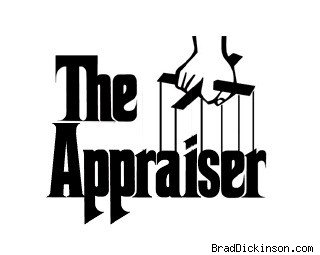Did you just get a bad Louisville appraisal on your home? Is the value so far from what your Realtor told you? Don’t feel bad, or maybe you should, because this happens all the time.

This lady is shocked to see the bad Louisville appraisal for her home! Are you kidding me?
Real-world, Real Bad Louisville Appraisal
Ok, let’s begin with a real-life example. Names have been removed to protect the innocent.
- September 2010: Louisville appraisal for 123 Maple St. came back with a value of $355,000.
- July 2012: Louisville appraisal for 123 Maple St. came back with a value of $305,000.
- February 2015: Louisville appraisal for 123 Maple St. came back with a value of $342,000.
So, let’s digest this a bit. It looks bad, doesn’t it?
Louisville real estate in 2010 was smack-dab in the middle of the worst housing recession our country has seen in some time. The Louisville appraiser knows this (assumedly) given that this is his full-time job.

Nonetheless, the home’s value is set. As a Realtor, I saw this value as far too high, thus a bad appraisal.
Jump ahead two short years and the very same house, is the very same condition appraised for $50,000 less?! I mean, we’re not Las Vegas or Naples where home values ride roller coasters ups and downs. What’s going on here?
Just in the same way that the first bad appraisal was off by a good amount, this one was as well… just in the other direction.
Three more years and the home has the entire first floor covered with new, gorgeous hardwood floors. I’ve seen the house, they really look great.
Also, about 1,000 square feet of their basement has been finished with high-end vinyl plank flooring, a full bath with modern vanity, toilet, and shower, and other high-end finishes.
So, where does this most recent appraisal land? Cover your eyes and toss a dart… $342,000.
Ok, let’s discuss what should have been done so that bad Louisville appraisals aren’t the norm. It’s simple really, just follow the steps.
Step 1: Choose the Correct Valuation Method
There are many ways to create a report. A good number of online services make it EZPZ but that doesn’t make them good.
The only method that’s worthwhile is the manually-adjusted comparative market analysis. More than likely, you’ve heard the term CMA. But unless the CMA is done by manually adjusting many criteria, it’s junk. The more criteria adjusted, the better the results.
Step 2: Choose the BEST Comps
Next, in order for the result to be of value, solid comps must be used. Comps are homes that have sold—not listed, not pending but SOLD. Appraisers really show their ignorance when they throw an Active Listing into their appraisal.
Comps must be truly comparable to the subject property. Is the subject property a Ranch? Comps should be ranches too. Have a finished basement? Use comps that also have finished basements. Large lot? You get the idea.
This might be a challenging task but if you don’t choose the best comps, everything falls apart.
Just like the old saying goes, “Garbage in, garbage out.”
Step 3: Manually Adjust 8-14 Home Attributes
Now the real work begins!
This is where so many appraisers just skimp or cheat. In the 2015 appraisal listed above, the lazy Louisville appraiser only adjusted one criterion, square foot, on two of the three comps used. That’s crazy!
That third comp? He adjusted two criteria. Unreal.
When I create a professional CMA for one of my clients, it’s a two- to three-hour affair. If you want a solid value, it takes work. Otherwise, we’d all just bring up the infamous Zestimate and take our chances.
What To Do
In today’s heavily regulated marketplace, the only recourse is patiently explaining the request for modification. Most appraisers don’t care and won’t modify but it doesn’t hurt to try.
Have your Realtor work up the best comps that might lead the appraiser to improve the value and possibly save your deal.



